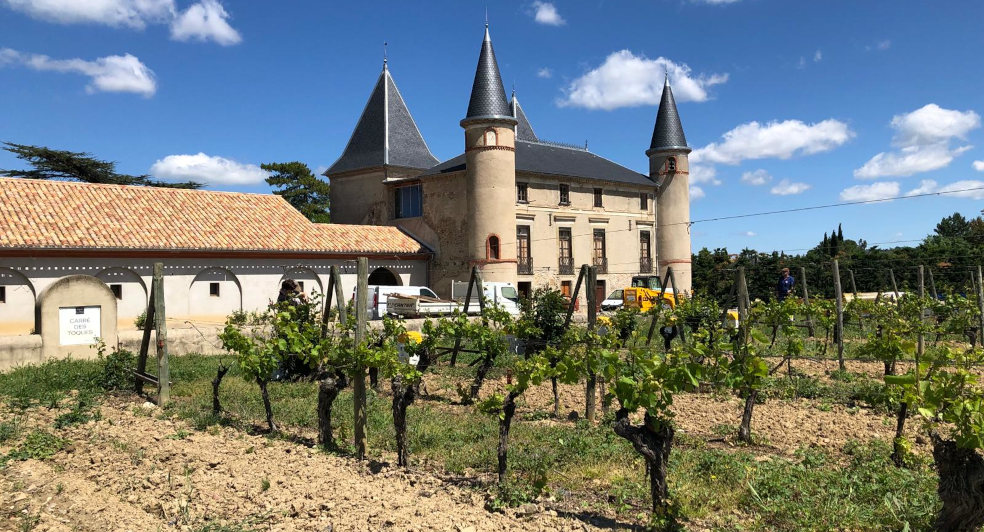Limoux, The Oldest Sparkling Wine In The World
21st February 2024

To everybody’s surprise, not to mention disappointment, it is not Champagne that holds the reputation of the oldest sparking in the world, but it is the sparkling of Limoux!
Limoux, a town in the region of Occitanie in France is not only the oldest sparkling winemaking region in the world but is also one of the oldest AOP’s in the entire region of greater Languedoc. Different methods of sparkling winemaking are used to reach different styles of surprising quality sparkling.
Monks of the abbey St. Hilaire discovered that a wine can become sparkling after having a second fermentation in the bottle. This discovery took place in the year 1531, long before other regions (including Champagne) or countries began producing sparkling wine. The sparkling wines will concentrate mostly on the usage of the Mauzac grape. Mauzac is a typical grape variety for the region of Limoux, but also for Gaillac, more in western region towards Toulouse. The other white varieties used are Chardonnay and Chenin Blanc grapes.
There are three different styles of sparkling in Limoux, each representing its own AOP:
• AOP Blanquette de Limoux
• AOP Crémant de Limoux
• AOP Limoux Méthode Ancestrale
The AOP Limoux Méthode Ancestrale is of course the original method like the monks from St. Hilaire would use, many centuries ago. Most likely the sparkling was accidentally produced. After the first fermentation, bottles of wine would be stored in the cellars. There would still be some non-fermented yeast present in these bottles. This would usually happen at the end of winter. During springtime, the temperatures in the cellars would rise, allowing the residual yeast to ferment and creating a sparkling wine in the process. The Méthode Ancestrale still uses the same method, resulting in a light sparkling within the bottle. The residual sugar ensures a sweet note to the wine as well. The aromas will let you think of glazed limes, along with overripe apricots and very concentrated flavours. This style will concentrate on the usage of Mauzac. This can be enjoyed with a light dessert based on fruit.
For the AOP Crémant de Limoux the usage of the Mauzac grape cannot exceed 20%, leaving Chardonnay, Chenin Blanc (sometimes Pinot Noir) with the majority of share in the blend. However, due to decreasing plantations of Mauzac, we sometimes find Crémant made solely of Chardonnay and Chenin Blanc. The Crémant follows the Méthode Tradionelle, with the second fermentation in the bottle. Usually, a Crémant has the legal obligation to age for a minimum of 9 months on the lees, but for Limoux we see that a minimum of 12 months is required. This leads to more yeasty notes, but always with crisp acidity. The aftertaste of these Crémant tends to be long, with a fine mousse. Crémant de Limoux can be used as an aperitif, but also matched with lean fish and other entrees.
Perhaps the style where the region is most known for, AOP Blanquette de Limoux. This style will still focus on the usage of Mauzac, which must be 90% of the total blend, supported with Chardonnay and Chenin. The second fermentation will also take place within the bottle, however now with a minimum of 9 months instead of 12. Therefore this still will have a more concentrated flavour. Not only due to less time of aging, but also the high share of Mauzac grapes. This fruitier Blanquette will taste like heaven as an aperitif or matched with fresh salads.
The township of Limoux lies in the western hills just south of Carcassonne. Here the Atlantic influence has a much-needed cooling effect. Cool nights will alternate with warm days, leading to healthy development of the grapes, while retaining natural acidity. Apart from the beautiful sparkling wines, there are two other AOPs for red and white wine. AOP Limoux Blanc must be a blend of Chardonnay, Mauzac and Chenin, but will mostly concentrate on Chardonnay. AOP Limoux Rouge will use a blend of Merlot, Cabernet Franc, Cabernet Sauvignon and Mediterranean varieties like Grenache and Syrah. The highest concentration of the blend will be the Merlot grape. Both the white and the red blends will be fermented in oak barrels.
Limoux is a surprisingly different wine region, with great respect for original winemaking techniques!
![]()
Anthony Mulders – De Beir
Wine expert, wine writer, sommelier and above all enthusiast- sharing passion and knowledge from the world of wine. Founder of www.gettinghotforwine.com
